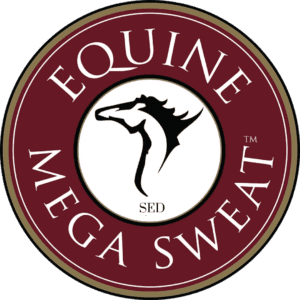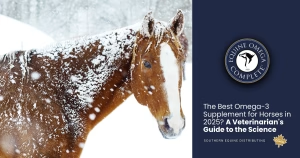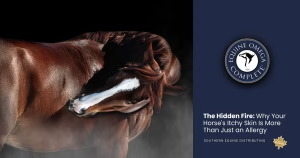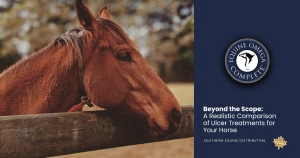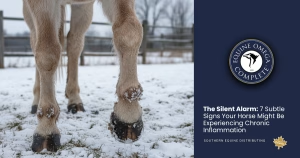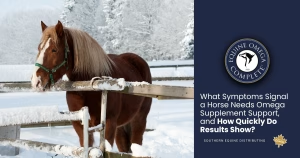When we think of superpowers in the animal kingdom, a horse’s ability to sweat might not immediately come to mind. Yet sweating is one of the most critical physiological processes that enable horses to thrive as athletic, hardworking animals. Unlike humans, who rely on sweating primarily for cooling, horses depend on this mechanism as their first line of defence against overheating—especially during intense exercise or in hot climates. Let’s dive into the science of equine sweating, its role in thermoregulation, and why disruptions like anhidrosis (the inability to sweat) demand urgent attention.
The Physiology of Equine Sweat: A Cooling Marvel
Horses are evolutionarily designed for movement. Their large muscle mass generates significant heat during exercise, and without an efficient cooling system, their core temperature could rise dangerously. Enter sweating: a horse’s primary method of thermoregulation.
Horses sweat through eccrine glands, which are densely packed in their skin. When body temperature rises, these glands release sweat—a mix of water, electrolytes (like sodium, potassium, and chloride), and proteins. As sweat evaporates from the skin’s surface, it dissipates heat energy, cooling the horse’s body. What makes equine sweat unique is its high protein content, which creates the “foamy” lather often seen during strenuous workouts. While this protein-rich sweat can sometimes alarm owners, it’s a normal byproduct of their biology.
Fun fact: A horse can lose 10–15 litres of sweat per hour during intense exercise. This staggering rate underscores why hydration and electrolyte replenishment are non-negotiable for equine health.
Thermoregulation: Why Sweating is Non-Negotiable
Thermoregulation refers to the body’s ability to maintain its core temperature within a narrow, survivable range. For horses, this range is typically 99.5°F to 101.5°F (37.5°C to 38.6°C). Even a slight increase (to 104°F/40°C) can lead to heat stress, while temperatures above 106°F (41°C) risk organ failure or death.
When a horse exercises, up to 80% of the energy they produce is released as heat. Without sweating, this heat would accumulate rapidly. Evaporative cooling via sweat is so effective that it accounts for 65–70% of a horse’s heat dissipation. Compare this to humans, who rely on sweating for just 30% of cooling (most of our heat escapes through radiation). This difference highlights why sweating is a literal lifesaver for horses—and why any disruption to this system is catastrophic.
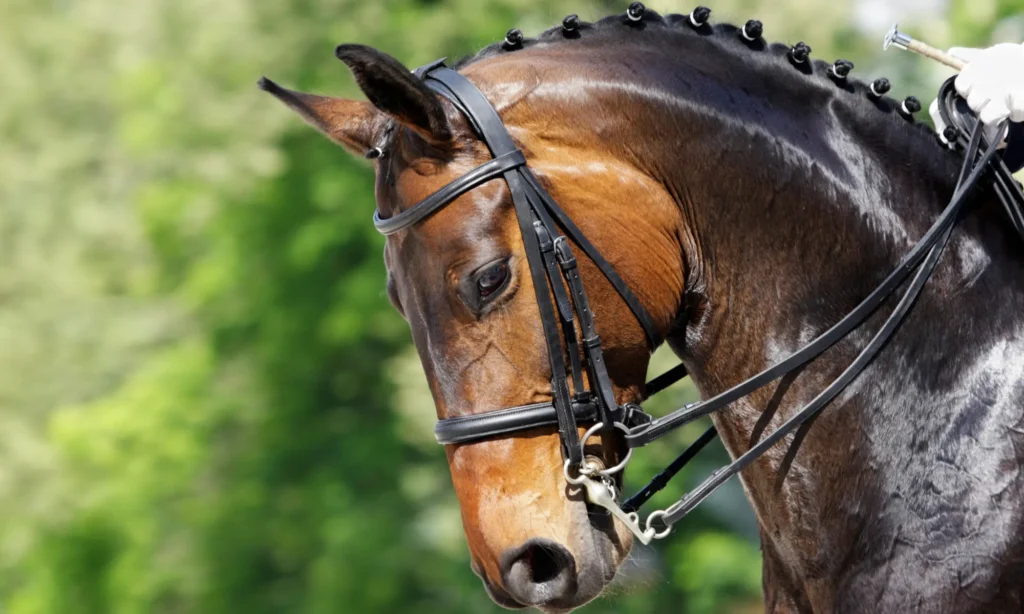
When the System Fails: Understanding Anhidrosis
Anhidrosis, or “non-sweating syndrome,” is a condition where horses produce little to no sweat, even when overheated. It’s most common in hot, humid climates (e.g., the southern U.S.), but cases occur worldwide. While the exact cause remains unclear, theories suggest prolonged exposure to heat, genetic factors, or dysfunction in sweat gland receptors may play a role.
Signs of Anhidrosis Include:
- Rapid, laboured breathing (even at rest)
- Elevated body temperature (above 103°F/39.4°C)
- Dry, flaky skin despite heat
- Lethargy and reduced performance
- Increased risk of heatstroke
Anhidrotic horses can’t cool themselves effectively, forcing them to rely on less efficient methods like panting. Without intervention, this condition can lead to chronic dehydration, muscle damage, or collapse.
Combating Anhidrosis: Solutions and Innovations
Managing anhidrosis requires a multi-pronged approach:
- Environmental Adjustments: Stabling during peak heat, using fans, and providing shade.
- Cooling Techniques: Frequent hosing with water and using sweat sheets to enhance evaporative cooling.
- Dietary Support: Electrolyte supplements to replace losses from limited sweating.
Equine Omega Sweat - Southern Equine Distributing
Equine Mega Sweat® is a special formulation of Equine Omega Complete, carefully designed to address anhidrosis and promote effective sweating. Packed with 15,000 IU of absorbable natural d-alpha tocopherol (vitamin E), this powerful antioxidant helps combat cellular damage caused by free radicals. By reducing oxidative stress, vitamin E aids in the functioning of sweat glands and supports your horse’s ability to cool down naturally.
Note: Always consult a veterinarian before starting any supplement regimen for anhidrosis.
Supporting Your Horse’s Thermoregulation
Even for horses without anhidrosis, optimizing thermoregulation is key to performance and welfare:
- Hydration: Offer fresh, cool water at all times. Add electrolytes to water or feed post-exercise.
- Gradual Acclimatization: Slowly increase workload in hot weather to allow sweat glands to adapt.
- Post-Workout Care: Cool horses with water, scrape off excess moisture, and walk them until breathing normalizes.
Thermoregulation: Sweat = Survival
Sweating isn’t just a messy side effect of riding—it’s a biological masterpiece that lets horses gallop, jump, and work safely under the sun. By understanding thermoregulation and recognizing disorders like anhidrosis, owners can take proactive steps to protect their equine partners. Whether through innovative supplements like Equine Omega Sweat or smart management practices, prioritizing this “superpower” ensures horses stay healthy, happy, and ready for adventure.
To learn more about Southern Equine Distributing’s excellent line of veterinarian approved of liquid supplements for horses and dogs, check out our website, or reach out to your local vet clinic to see if it’s right for you.

